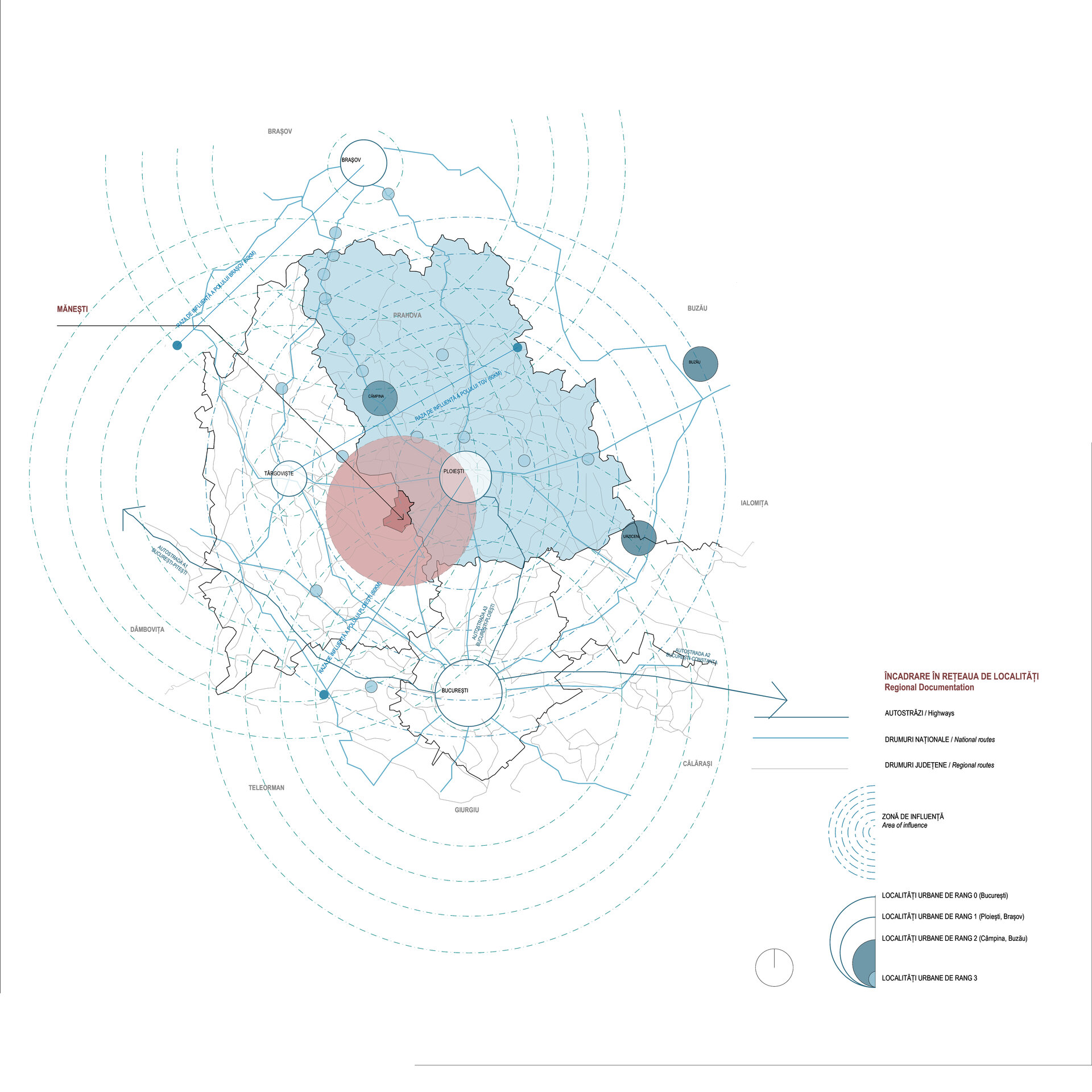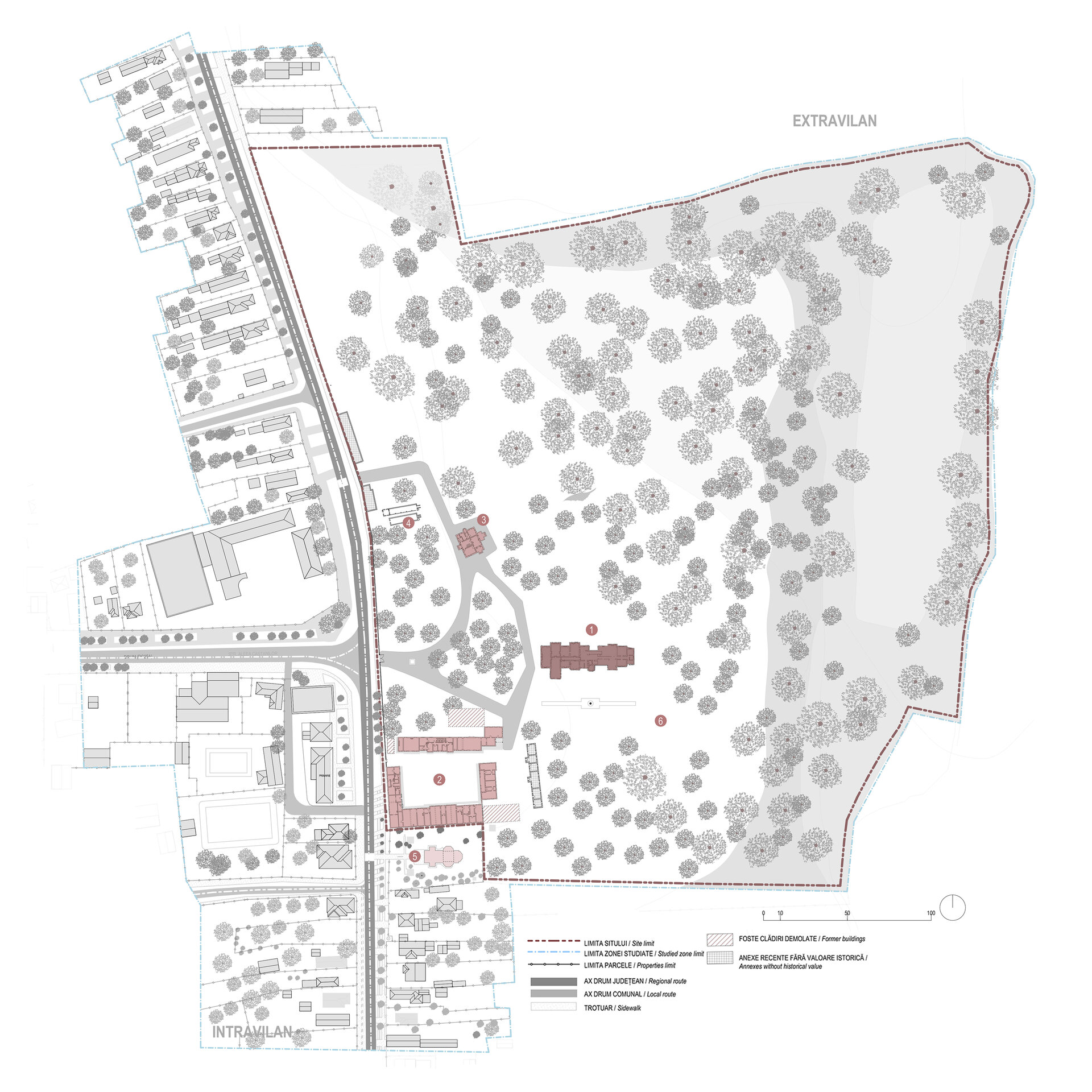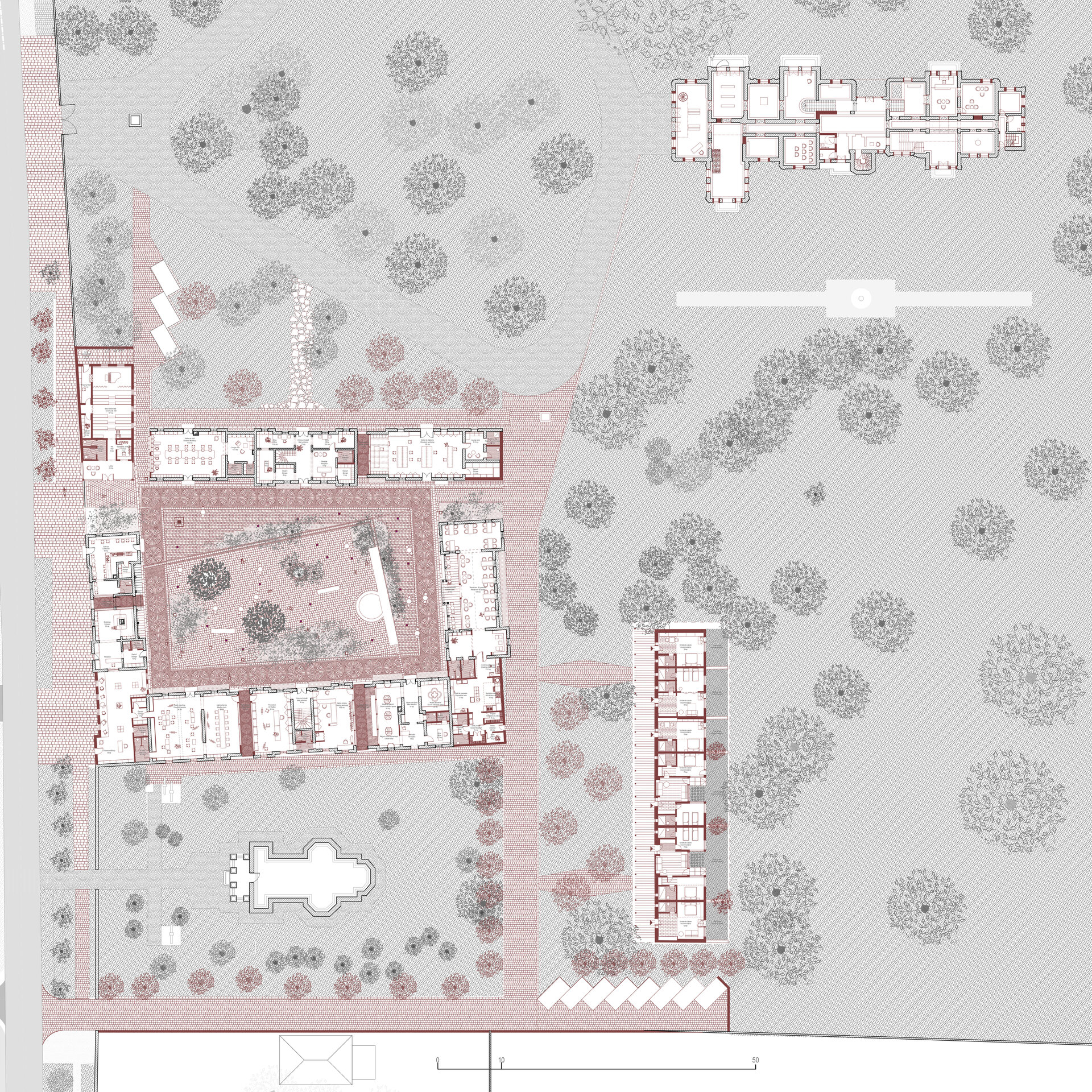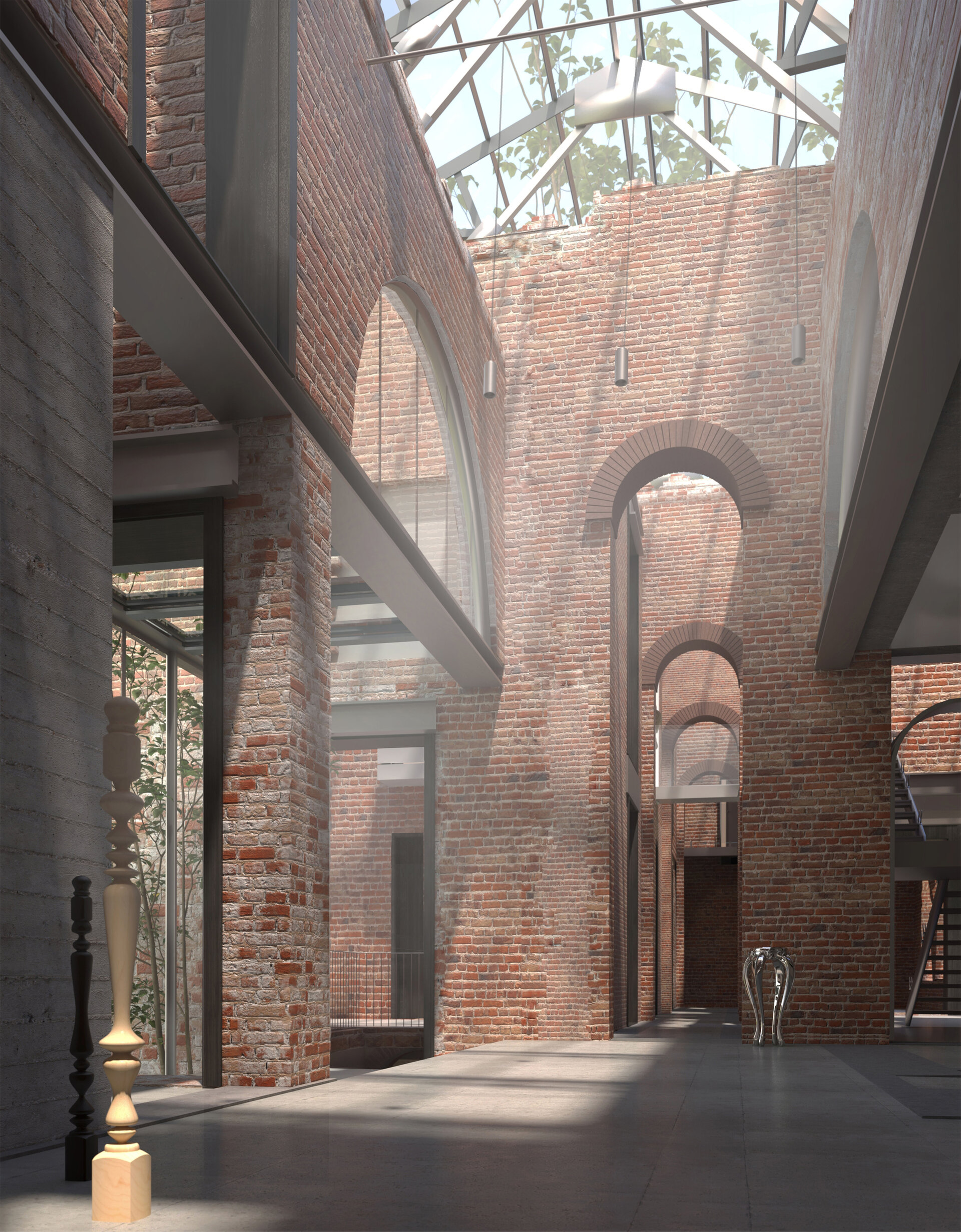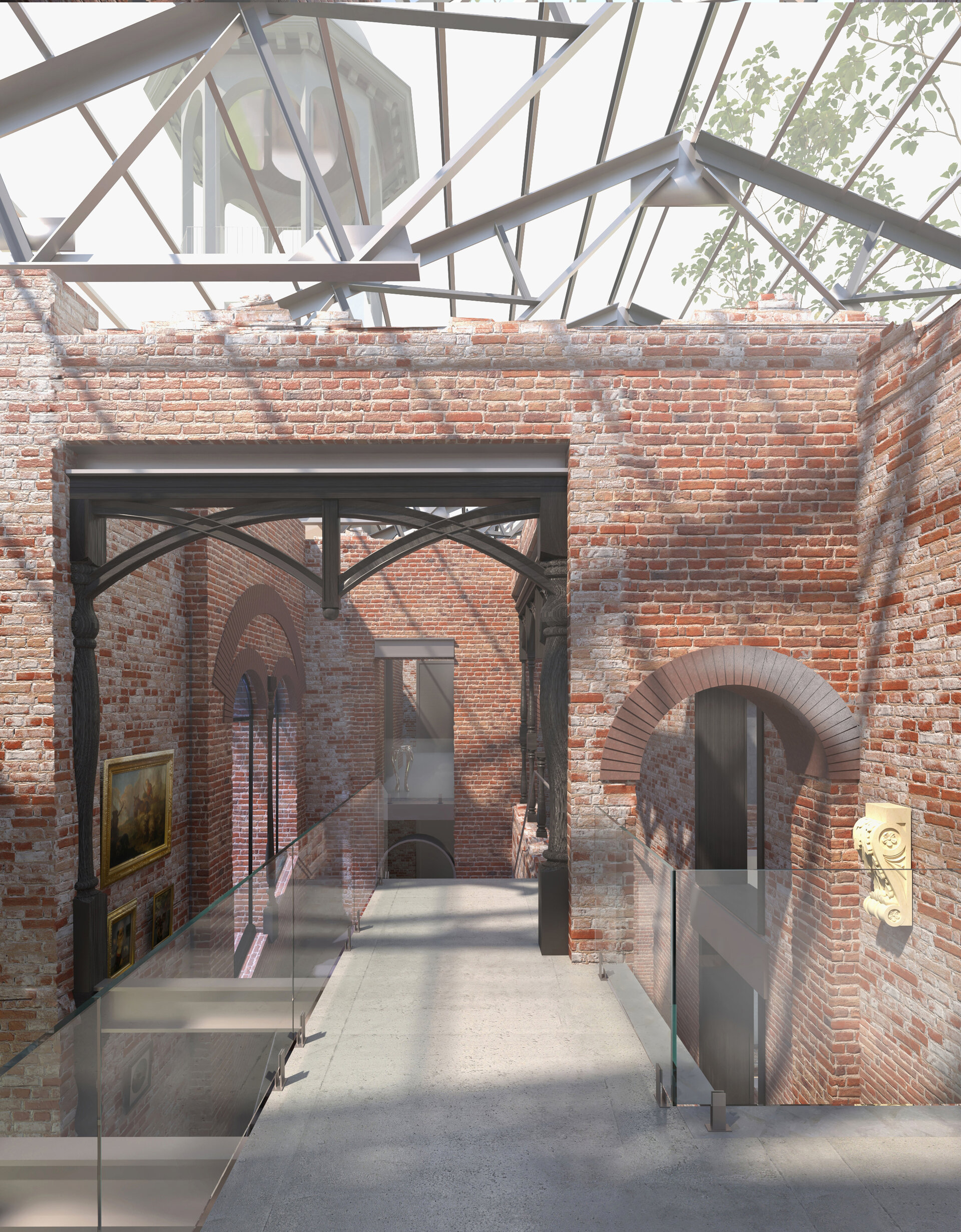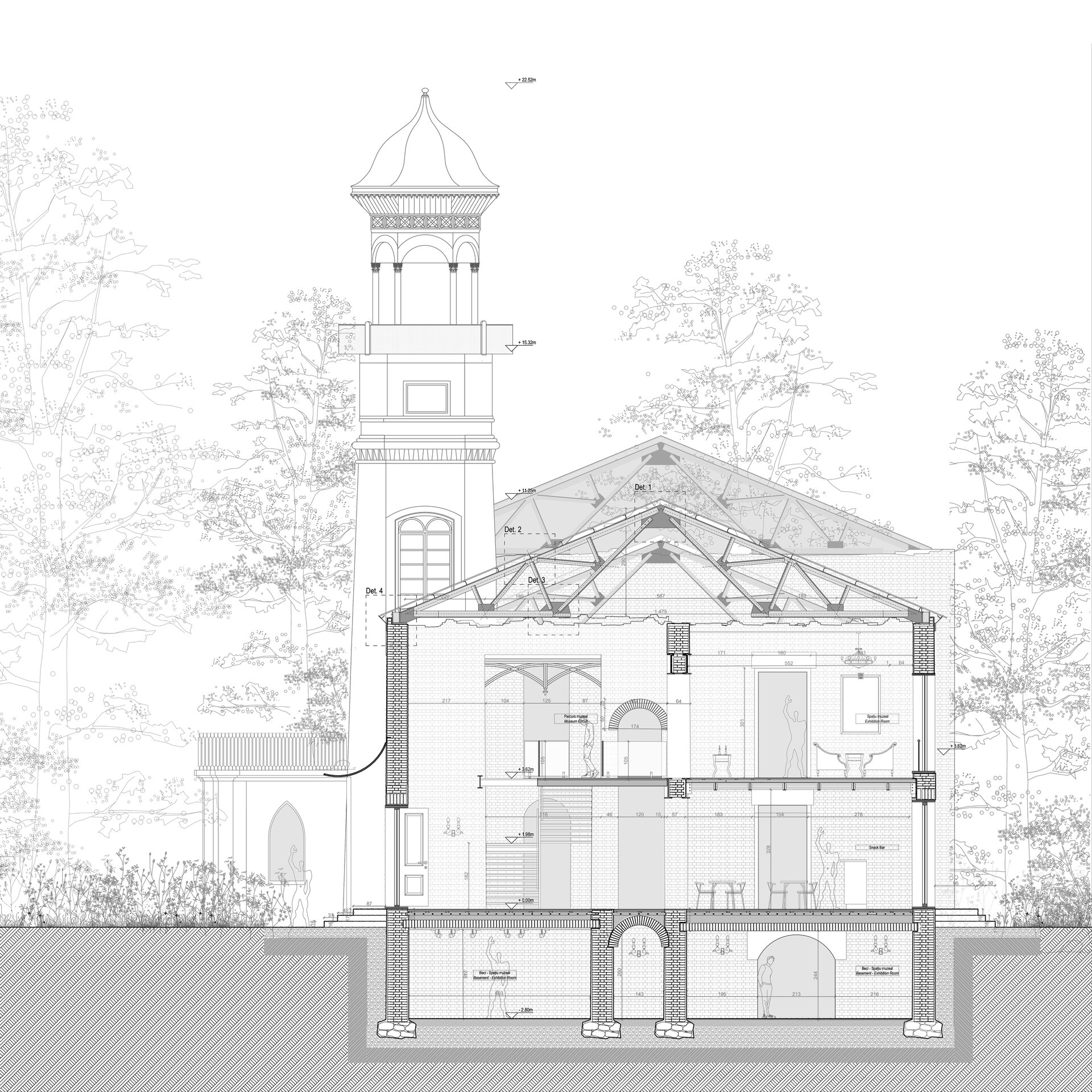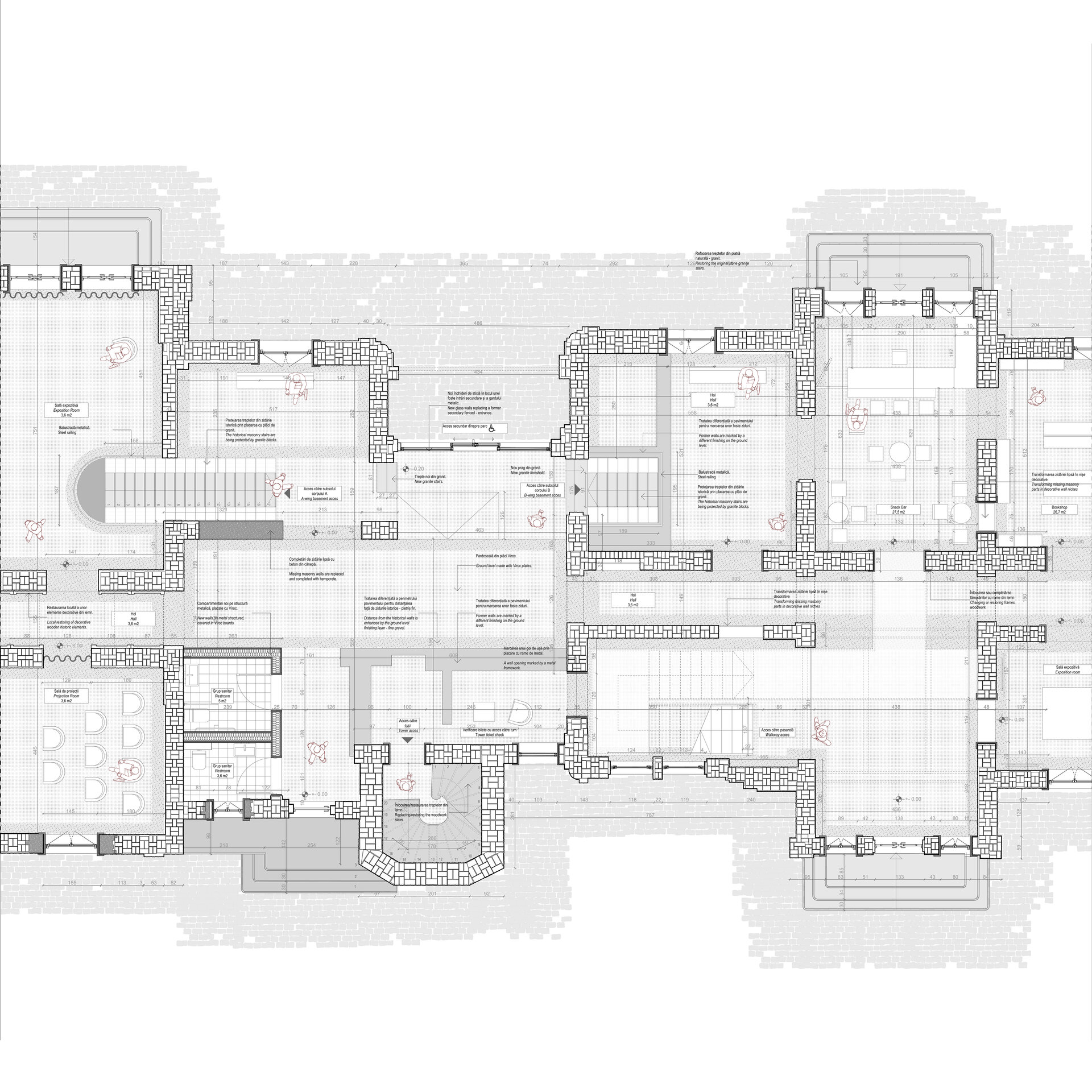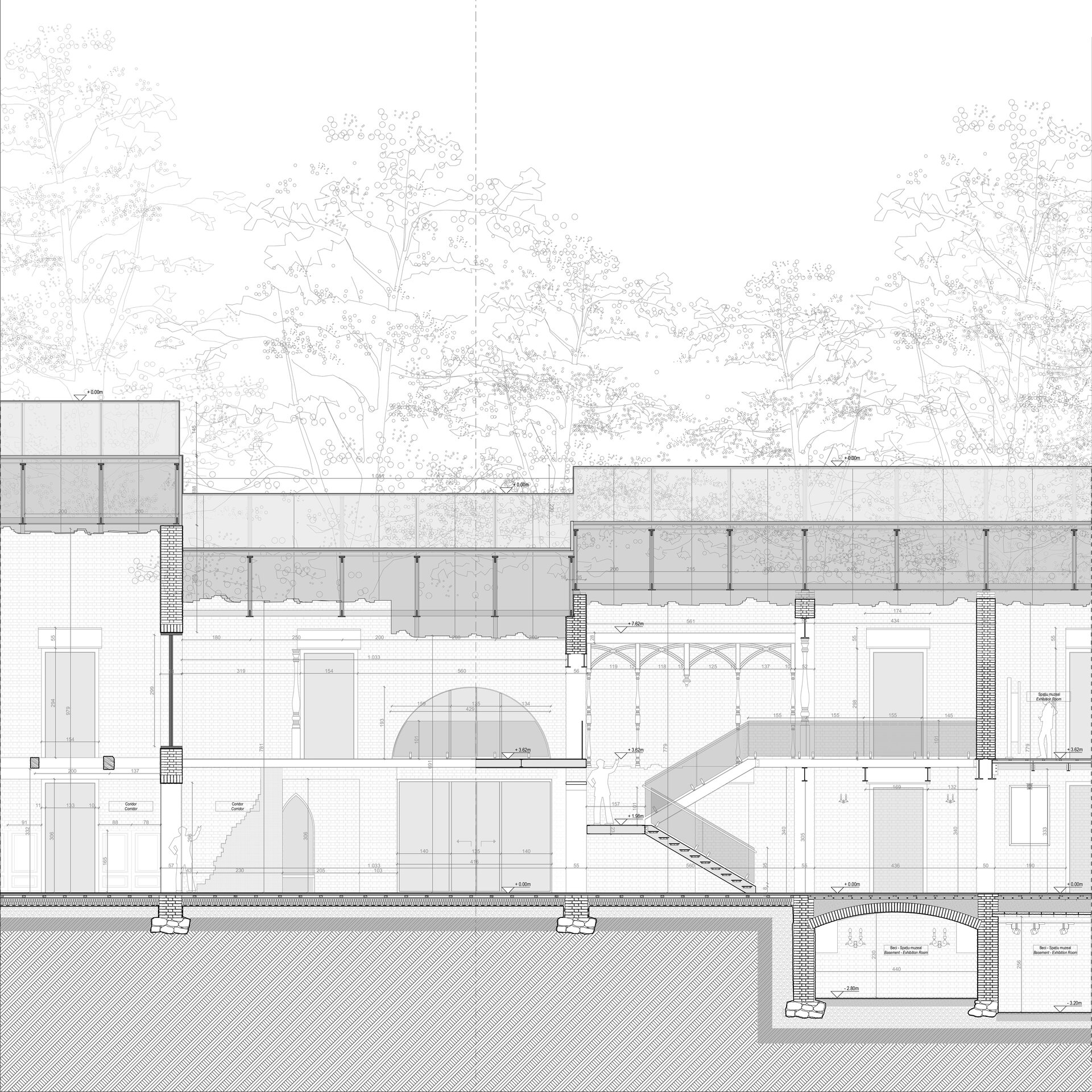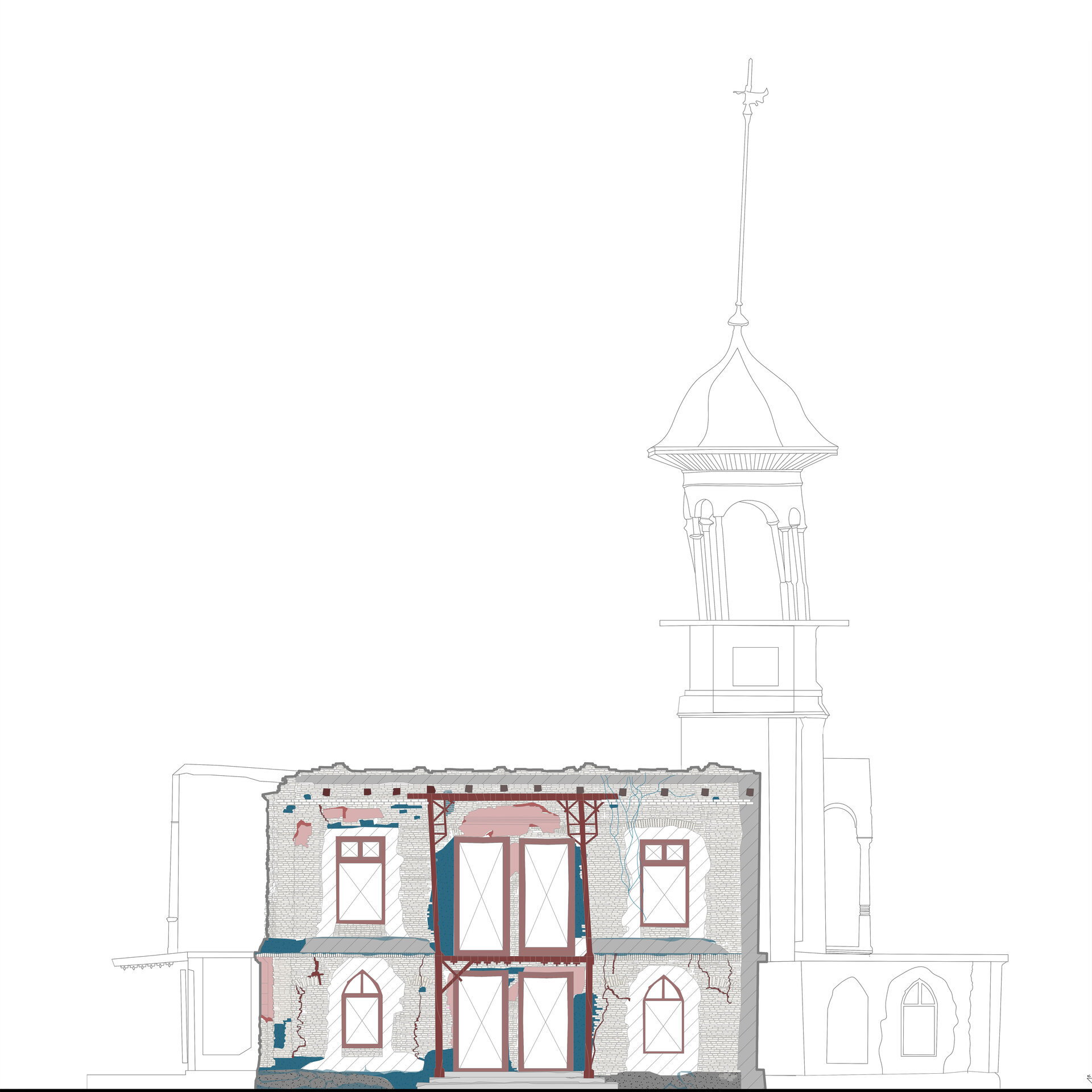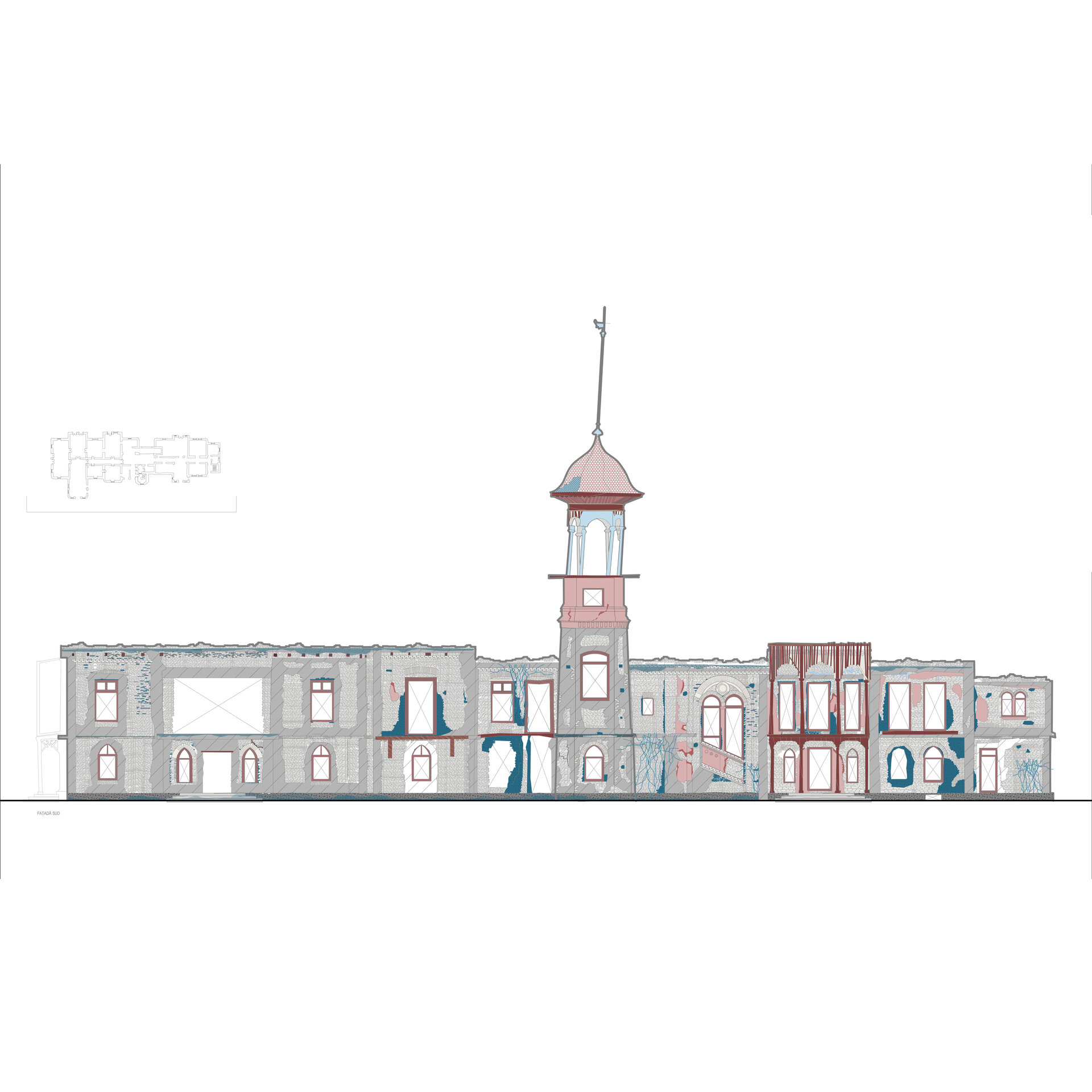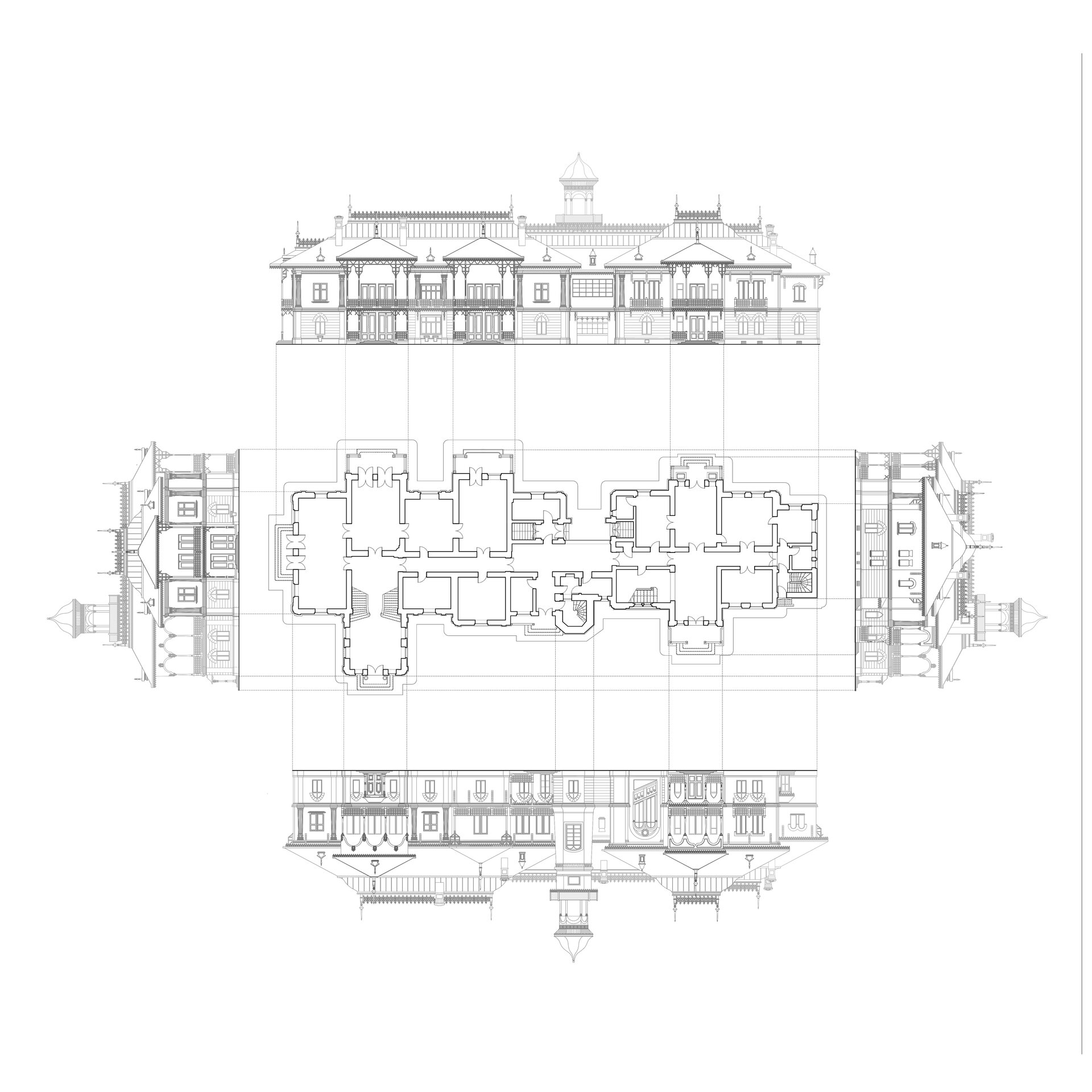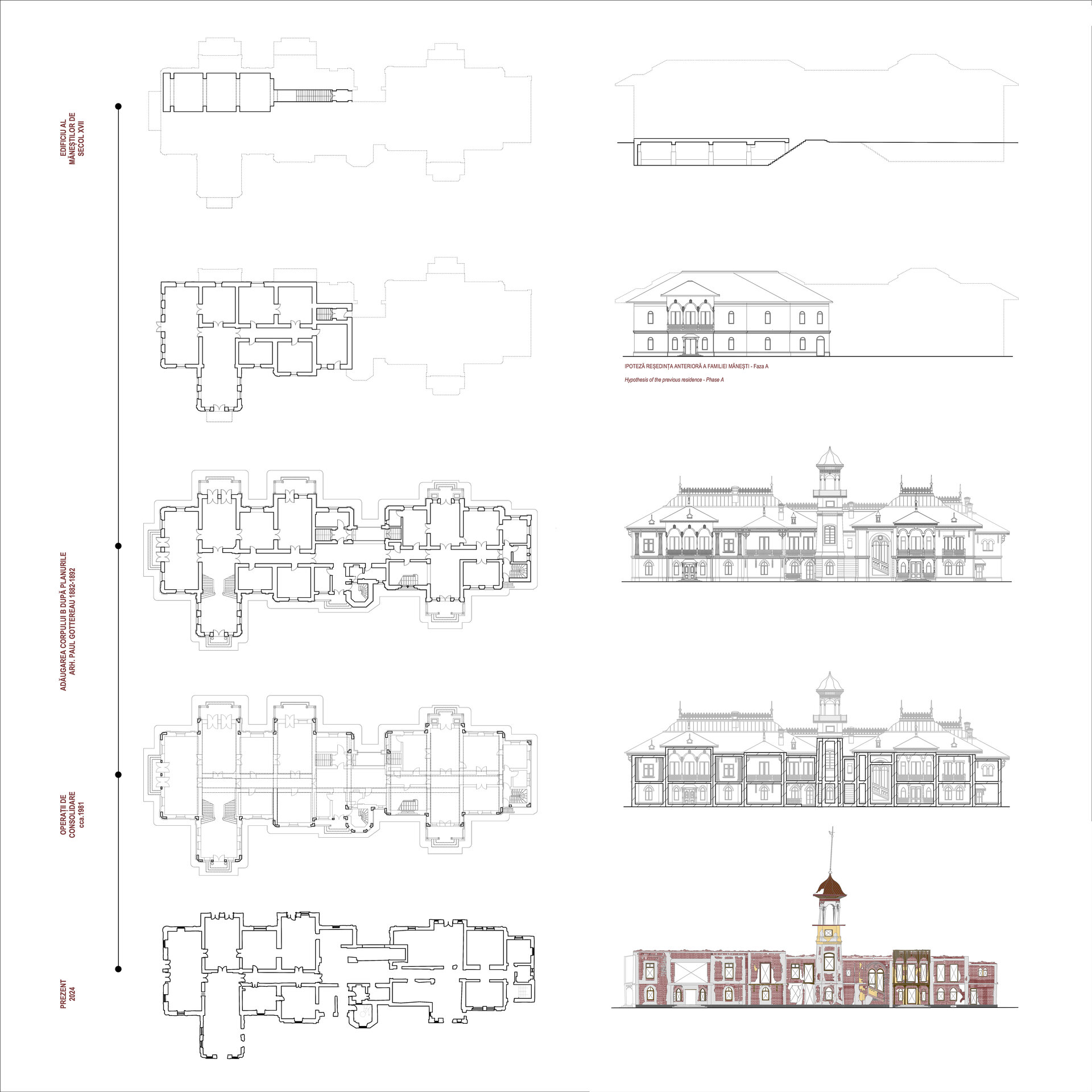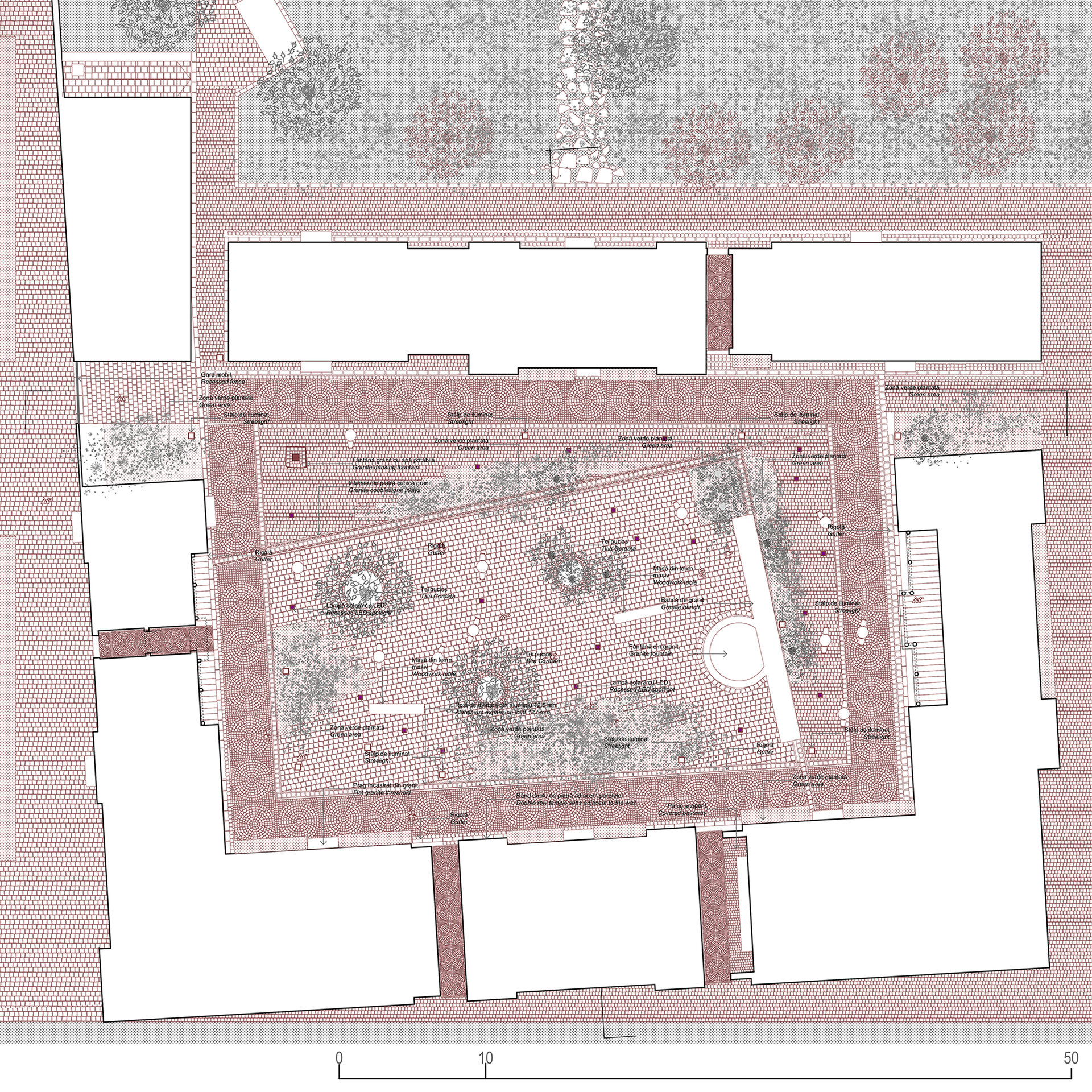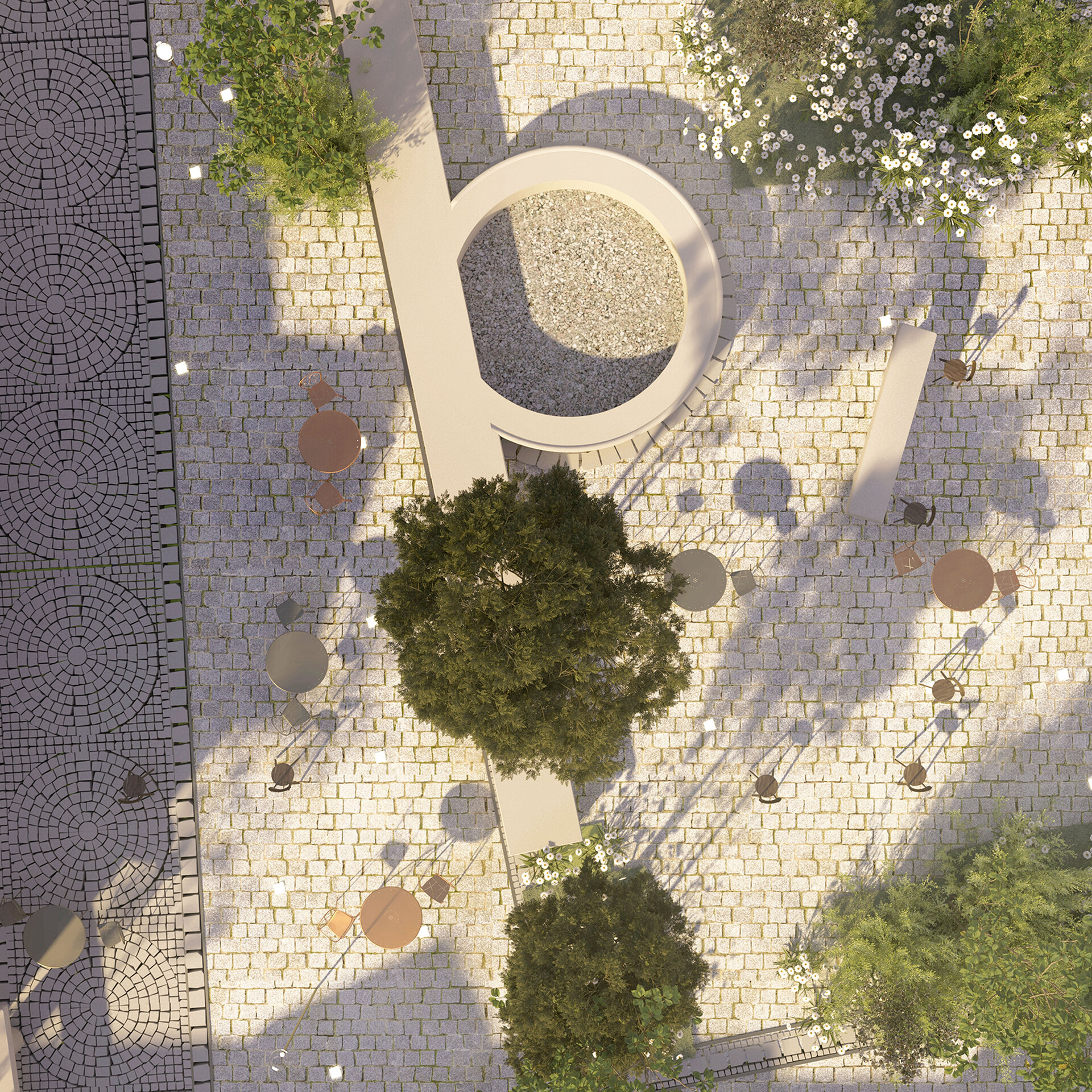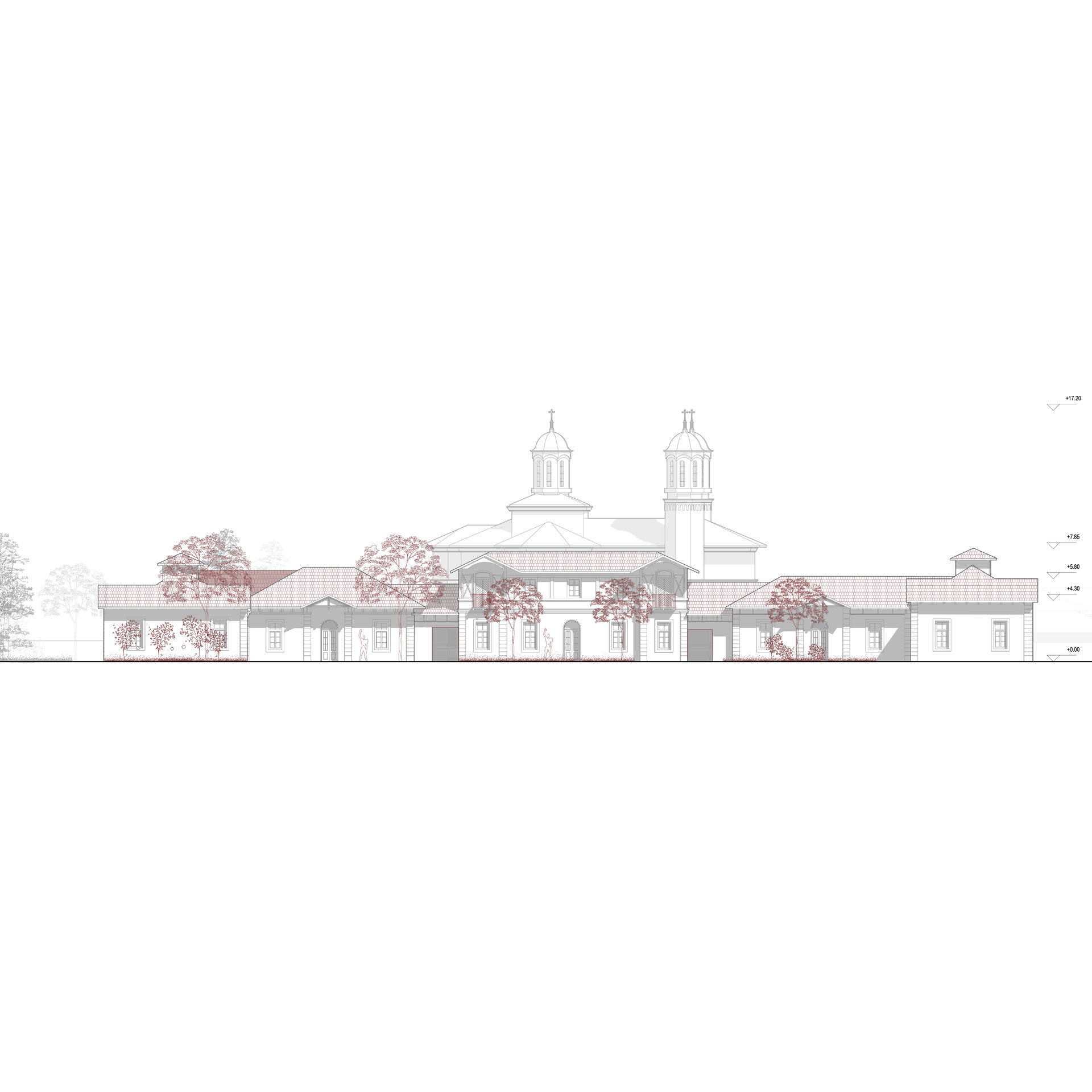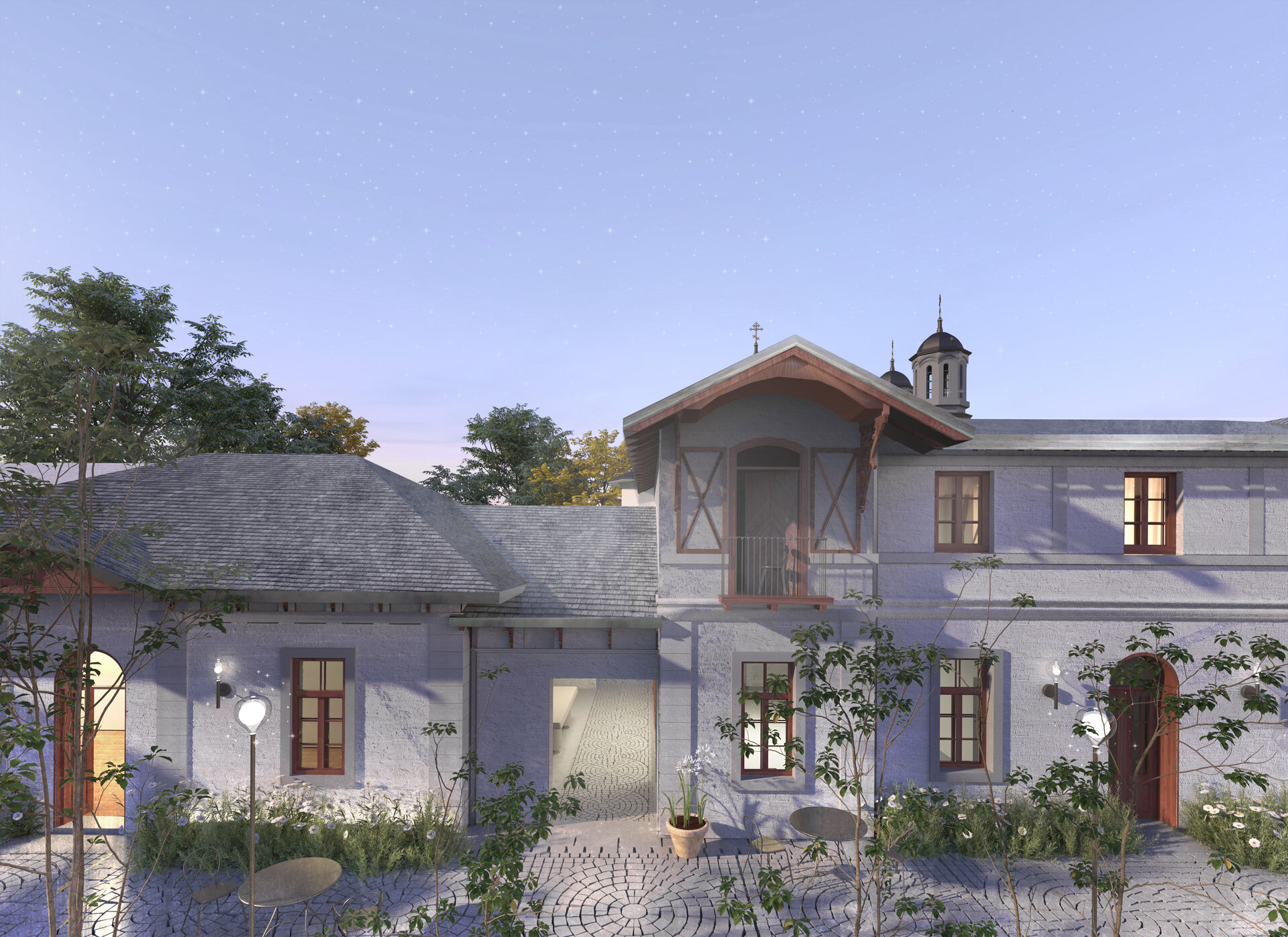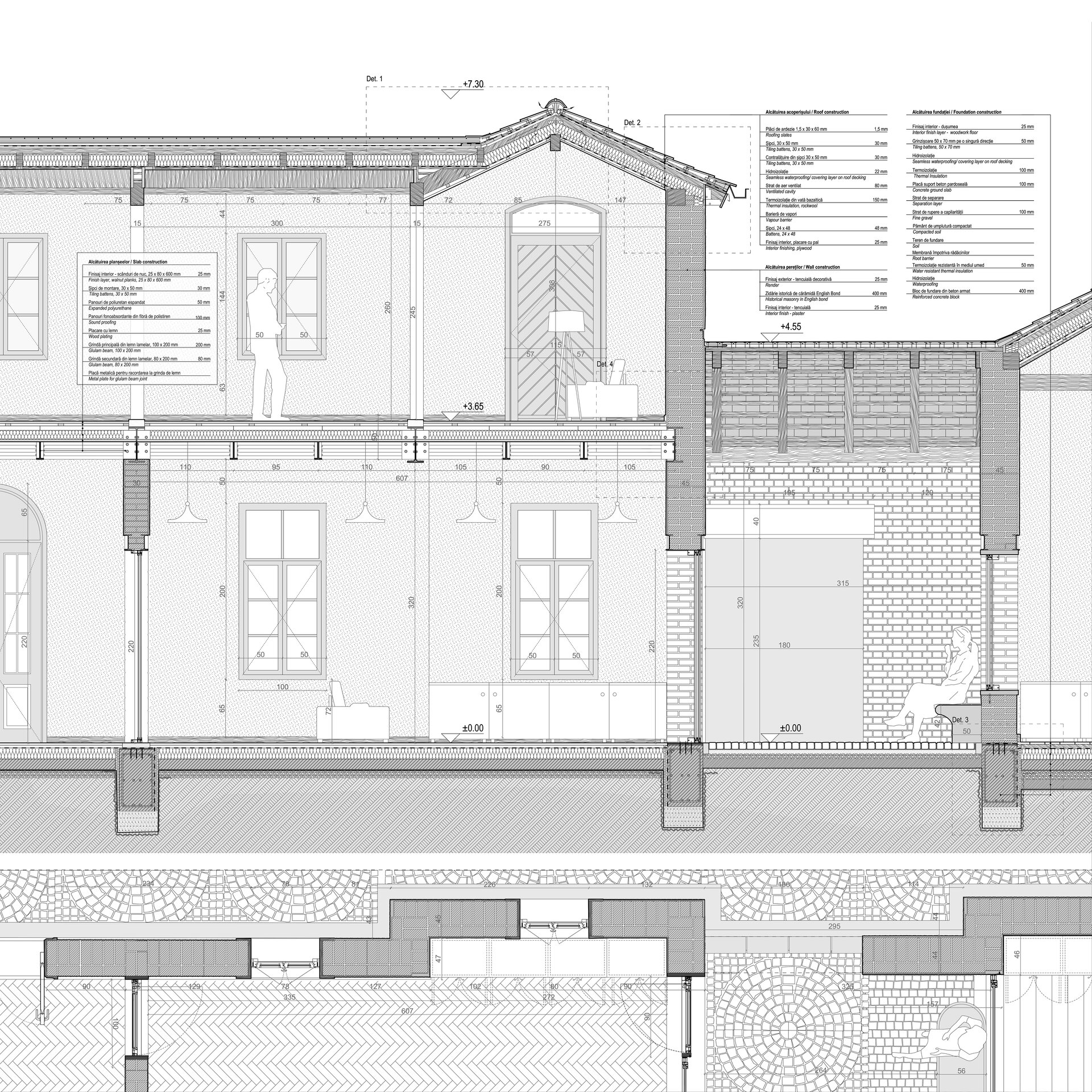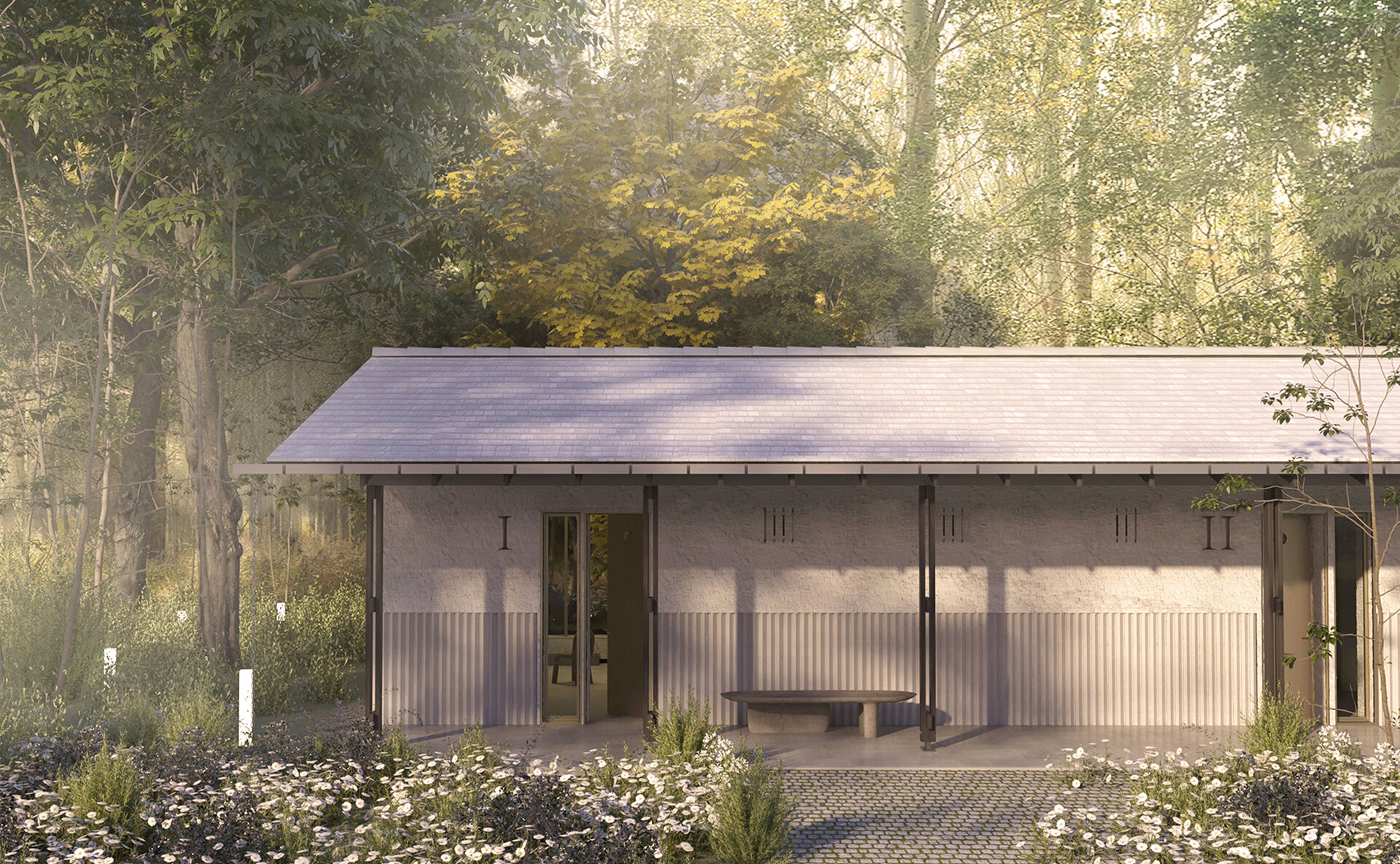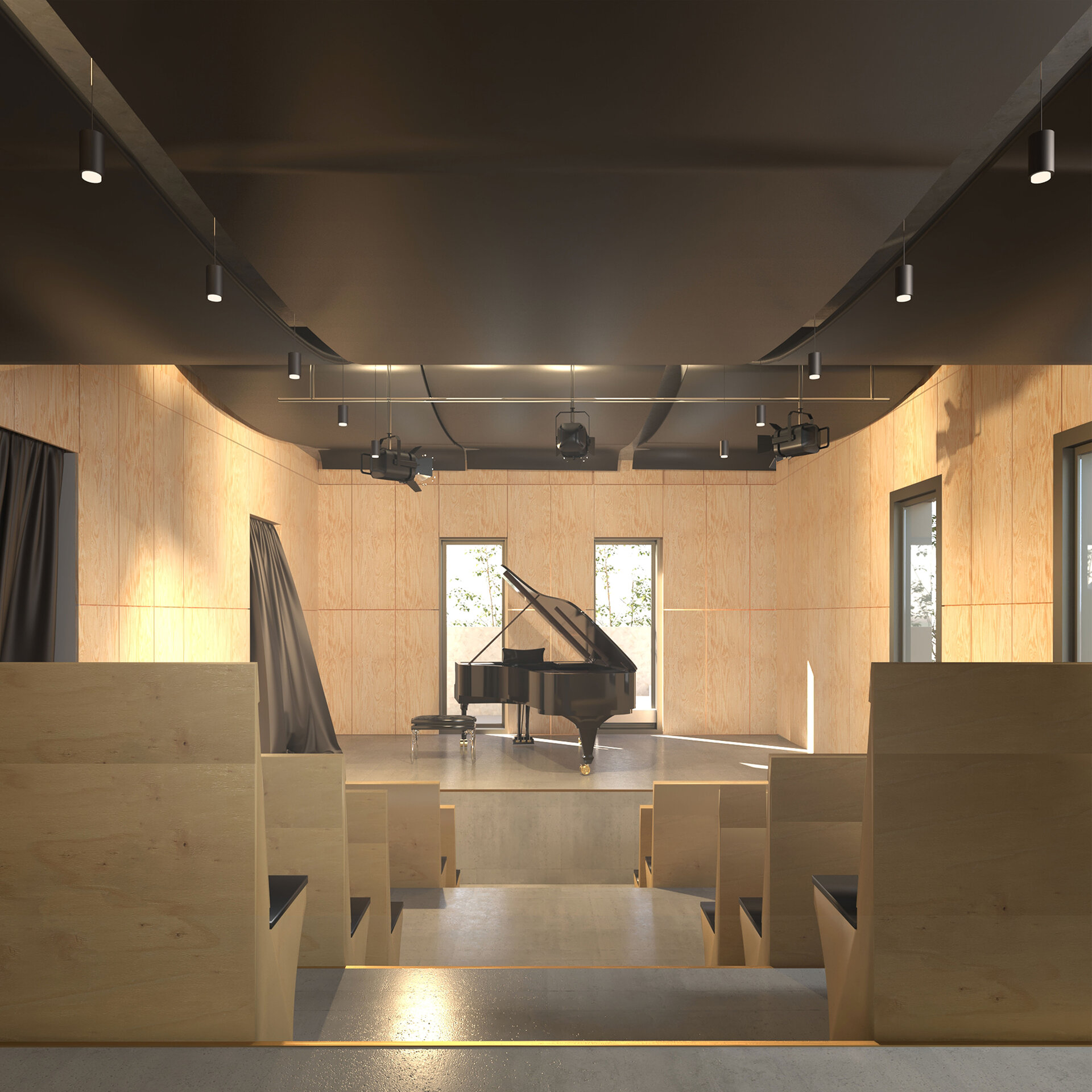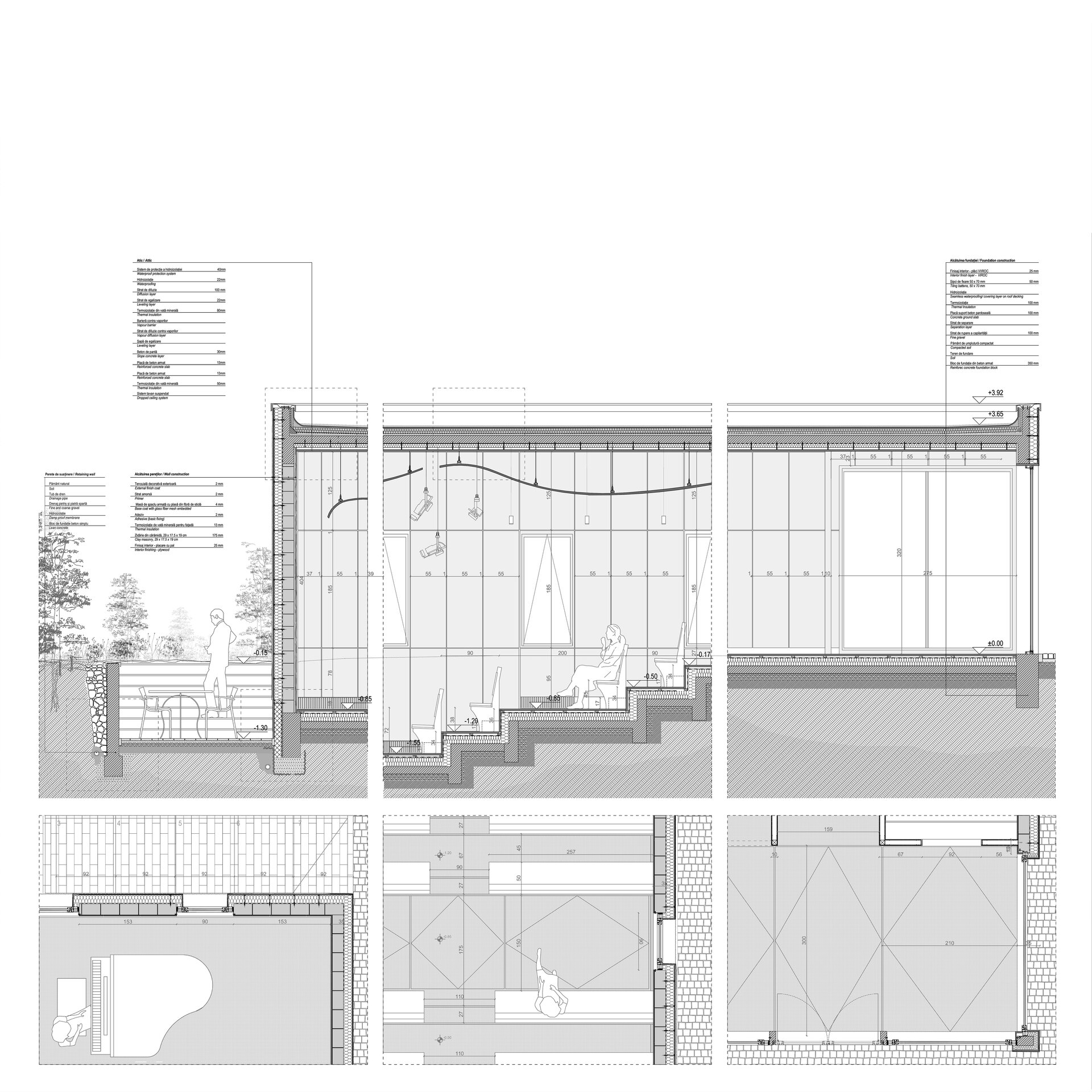
- Nomination for the “Research through Architecture / Architecture Diplomas” section
Recovery of Callimachi-Văcărescu ensemble. Cultural and touristic circuit at Mănești, Prahova
Authors’ Comment
The proposed intervention for the recovery and revitalization of the heritage ensemble Callimachi-Vacarescu aims to address the issues related to increasing the cultural and touristic level in the rural area. Through the involvement of multiple categories of social actors: from the local community, to professionals and visitors, the intention is to ensure the saving and continuity of the use of heritage buildings on the site, by refunctionalizing and bringing them into the contemporaneity. As a cultural and economic resource, the recovery scenario involves the transformation of existing buildings into cultural, production and museum spaces, designed to (re)integrate them into both the local collective mind, as well as on the map of regional touristic routes. Thus, the use of heritage architecture can become a driver in sustainable development projects, aimed at increasing the level of awareness and accountability to existing historical resources.
Today the domain covers an area of 14 hectares and hosts the ensemble of an old mansions built between 1882 - 1892 based on the plans of French architect Paul Gottereau (1), the household ensemble built separately and currently completely abandoned (2), a holliday villa (3), two greenhouses near the northern entrance (4) and the nineteenth-century church, built shortly after the mansion (5) by the same architect, no longer a part of the property today. The edifice that became the emblem of the park, the Callimachi-Văcărescu mansion is not necessarily positioned in a strategic way in terms of orientation - having one of the main fronts to the north. Its location is most likely a result of the site factors, namely the preexistence of a construction of much smaller size. In the collective memory, the building is a presence towards which the local community relates to nostalgically. For them, it is just a ruined castle, whose only trace still lingering is the popular beliefs of what it was. As a respond tot his attitude, one of the proposed interventions needed to ensure awareness and resposanbility towards cultural heritage is the arrangement of exhibition spaces and an immersive museum route inside the remaining walls of the mansion. However, in order to become attractive to locals and a general public and to ensure the ongoing maintainance of the construction, a museum cannot answer the issure of abandonment on its own. Hence the need to associare it witg other related functions and activities. Summer school programms and different kinds of permanent workshops could represent the opportunity to bring together students and young professionals with different kinds of interests such as architecture and restoration, archaeology, landscale design, arboriculture, history and visual arts. The stakes are not only about refurbishing and bringing existing resources into the contemporary world in sustainable way, but also to increase the level and responsability towards cultural values. At the core of every revitalization scenario, the first step is to realize the values of the existing cultural heritage.
- Conversion and extension of the former Bourul Factory in Bucharest. Urban Hub for students
- Reimagining the Leonida Garages - Contemporary Cultural Space Bucharest
- Lost Bucharest Museum
- Recovery of Callimachi-Văcărescu ensemble. Cultural and touristic circuit at Mănești, Prahova
- Memorial Museum of Bucharest Pogrom
- ICA - Institute of Cinematographic Arts (in Timisoara)
- Landscape habitat: Extension and conversion of the former imperial baths of Herculane
- Constanța History and Archeology Museum the New Gallery
- Extension of the Independence Cinema with a Film and Media Faculty, Târgoviște
- Agricultural Research Center in Cluj
- City and Community - Youth Community Center on Dacia Boulevard, Bucharest
- “George Coșbuc” Flower Market - Rehabilitation and Expansion
- “Baba Novac” neighborhood center - Rehabilitation of the “Rucăr” commercial complex in Balta Albă, Bucharest
- Medresa, cultural center for Medgidia’s turkish-tatar community. Reintegrating the turkish bath into the urban circuit
- Workspaces for Creative Industries. Christo Gheorgief House
- Day-Care Centre. Nifon Mitropolitul House
- Archaeology Center in the Constanța Peninsula
- Tab. Socio-cultural Incubator. Conversion of the Bucovat Tannery, Dolj
- Community Center, Ferentari
- Art school for children
- Recomposing a lost urbanity. Cultural intervention in the Historical Center of Brăila, Romania
- Factory, School, Campus. Vocational School on the Abandoned Drajna Timber Factory Site, Măneciu County
- Interactive music center
- Catechesis center on Biserica Amzei street, Bucharest
- Center of creation and contemporary culture
- Cultural center - Extension of the “Radu Stanca” National Theater in Sibiu
- Bolta Florești - Community Ensemble
- Digital Fabrication Laboratories. Adaptive reuse of the “Ciocanul” Trade School, Bucharest
- The conversion of the chapel within the former noble estate of the Csávossy family, Bobda
- The house with ogives
- Cultural Forum in Brăila
- Sportul Studențesc Palaestra
- Forest of Arts - Cultural Center & Artist Residencies Timișoara
- Transformation and durability: Red Sand Fort, intervention in the Thames Estuary
- Danube waterfront reimagined. Restoration and conversion of the former shipyard of Drobeta-Turnu Severin, RO
- Revitalization of the Neculescu Inn
- Creative and Research Hub “Unfinished Section Studio”
- Vocational School in Brasov
- Extension of the Pomiculture Research and Development Centre in Băneasa, Bucharest
- Arts and Science Park, Splaiul Unirii Bd.162, Bucharest
- Behind the apartment blocks. Urban reweaving. The Theodor Sperantia Neighbourhood
- The House of the Romanian Academy - From Object to urban fabric
- Chisinau Museum of Modern and Contemporary Art
